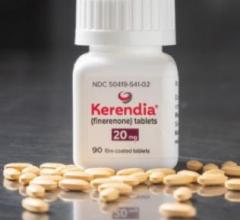
Getty Images
February 21, 2023 — Strokes are a leading cause of morbidity and mortality in the United States, as well as around the world. Various environmental and biological factors are known to affect the risks and outcomes of strokes. A new study led by investigators from Brigham and Women’s Hospital, a founding member of the Mass General Brigham healthcare system, analyzed the cerebral blood flow (CBF) regulation of individuals who had experienced strokes. The team found that cerebral autoregulation (CA) — one of the key processes to maintain sufficient blood supply to the brain — displayed a daily rhythm in stroke patients, with more degraded regulation during nighttime and morning hours, as compared to that in the afternoon hours. Their results, which are published in the Journal of Cerebral Blood Flow and Metabolism, are relevant for health care planning during stroke recovery.
“The care and course of actions done after a stroke are essential for optimal rehabilitation. Our study suggests that the daily rhythm of CBF regulation in stroke patients may be highly relevant to managing an individual’s activity and stroke recovery,” said senior author, Kun Hu, PhD, of the Medical Biodynamics Program in the Brigham’s Division of Sleep and Circadian Disorders. “Exercise and surgery post-stroke could be more optimal when scheduled during afternoon hours, as this is when dynamic CA functions more effectively. These results may improve our understanding of a vulnerable time window for the cerebrovascular system and help guide daily activity and personal care during stroke recovery, which could improve health outcomes for patients who have had a stroke.”
Stable CBF is a necessary component for normal brain function. Dramatic changes in CBF can cause increased cranial pressure and brain tissue damage. Thus, a process like CA, which helps maintain relatively stable CBF through constriction and dilation of blood vessels in the brain, particularly during changes in an individual’s blood pressure (BP), is crucial. Currently, there is a gap in knowledge concerning the daily variance of CA in stroke patients. Generally, the daily rhythms of physiological functions can be controlled by external behaviors like food intake, sleep, and exercise, as well as the internal circadian clock. This study is among the first to examine the potential variation of CA in the stroke population.
The research team observationally studied 28 participants being treated in a hospital in São Paulo, Brazil after experiencing a stroke. They received thrombolysis within 5 hours of the onset of their symptoms. After undergoing this procedure, the participants’ CA was assessed over the course of 48 hours at various time points by examining the relationship between temporal changes in blood pressure and cerebral blood flow velocity of the middle cerebral artery.
Analysis of the results showed evidence of differing cerebral blood flow regulation during various times of the day, especially when cerebral blood flow and pressure fluctuated at large time scales or low frequencies < 0.05 Hz. In particular, a more degraded regulation motif was seen during the nighttime and morning hours when compared to the afternoon. This dysregulation interval coincides with the increased prevalence of recurrent and first-ever stroke events during morning times.
While these results are promising, the researchers identified future avenues to assist in creating a greater understanding of the regulation mechanism.
“Interestingly, the daily rhythm of CA was present in both stroke and non-stroke sides of the brain, suggesting the factor(s) driving the rhythm should affect CBF regulation globally,” said first author Daniel Abadjiev, of the Medical Biodynamics Program in the Brigham’s Division of Sleep and Circadian Disorders. “To better understand underlying mechanisms, future studies should consider more frequent assessments across the 24-hour cycle, an increase in patient sample size, inclusion of non-stroke controls, and monitoring of the daily activity rhythms like sleep and exercise as well as intrinsic circadian rhythm among the participants.”
“This study demonstrates that a daily rhythm does exist for stroke patients,” said Hu. “Rehab plans should look to identify the daily rhythm and design a strategy that makes use of optimal CA. The long-term goal is to see if we can further control the rhythm of CA by manipulating an individual’s daily behavioral cycles or endogenous circadian clock in order to deliver more personalized medicine and improve their recovery.”
For more information: https://www.brighamandwomens.org/


 October 28, 2025
October 28, 2025 









